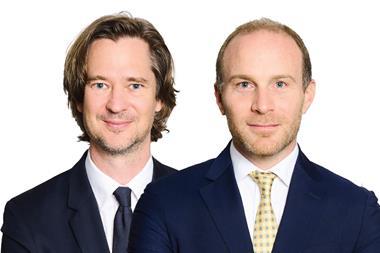The 1990s were, in many ways, a golden decade for private equity and venture capital – particularly in the US but also to an increasing extent in Europe in the second half of the decade.
In ‘traditional’ areas of private equity investment, like corporate buy-outs, returns at the mean were typically above those in the public market, and the performance of top quartile firms was often genuinely exceptional, measured either absolutely or relatively. In the closing years of the decade, fuelled by new technologies and supported by remarkably receptive and highly priced IPO markets, the business of financing new ventures enjoyed its best-ever returns, as well as a much higher public profile. Finally, during the decade private equity and venture capital emerged as an ‘industry’, with many participants maturing from small partnerships dominated by their founders to mini-institutions expected to outlast the names on the door. As markets, Asia and most emerging economies provided the exceptions to these trends: returns there were for the most part disappointing (particularly on a risk-adjusted basis) and the established private equity and venture capital ‘model’ remained generally difficult to apply, both financially and managerially.
It is fair to say that many of these developments either were not, or could not have been, anticipated at the start of the decade (the internet, for instance, was primarily the private property of the US Defense Department at the time). Private equity (along with real estate) is the longest of long-term asset classes: fully quantified and defensible returns are now available only for partnerships formed over 10 years ago. Firms now raising funds will normally have five years to invest the capital, during which time economic and sector conditions are likely to change substantially from those today; also, individuals now influential in their firms may resign, retire or refine their investment strategy during a fund’s life. Discerning opportunities to invest in the private equity and venture capital fields is thus more difficult, perhaps, than in the more transparent and ‘real time’ quoted markets. With that significant caveat, what observations about opportunities for European institutional investors to invest in these fields can be made at the threshold of a new decade?
Historically, the great weight of investors’ commitments have gone to these funds, as they require and can absorb large quantities of capital, and are also perceived to be lower-risk than pure venture capital funds (those that finance start-ups rather than purchasing or expanding existing businesses). Broadly speaking, although many investors expect the returns on traditional corporate funds to decline from 1990s levels, such funds are likely to remain large and core holdings in most portfolios. Access to what is now the ‘hotter’ venture capital arena is often restricted, particularly for new investors (as will be discussed below), and traditional corporate funds are the primary means for investors to deploy sufficient capital to meet private equity asset allocation goals. Many European funds offer more interesting opportunities than comparable US ones, as restructuring trends long established in the US are only now gathering real momentum on the continent, with positive effects on corporate deal flow from spin- and sell-offs.
However, the age of the mainstream financial buyer, if not over, is certainly in decline in the US and Europe. Particularly for large, auctioned transactions, capital is freely available and the application of financial leverage alone to generate returns a widely-distributed intellectual commodity. Investors are now more focused on corporate buy-out firms offering differentiated strategies, such as concentration on defined sectors, an ability to manage portfolio companies more aggressively for growth or efficiency, or the use of novel financial structuring concepts or deal-generating strategies.
Middle-market funds in the US and Europe also present opportunities meriting investor evaluation. In many cases, they operate in a less-travelled, and thus less price-competitive, part of the market. As European public equity markets develop, the ability to exit middle market transactions is also improving, always a concern among investors in the past. However, these ‘pros’ are balanced by ‘cons,’ including the limited capacity of middle market funds to absorb large commitments, the logistics of doing due diligence on them and of assembling a portfolio of smaller funds to provide geographic balance, and their greater dependence on key executives.
Finally, in Europe, there is a growing opportunity for institutions to invest in economies like Italy and Spain where previously currency and capital risks were high and the players largely unproven. While the private equity markets remain small, their participants have gained valuable experience in tougher times than today’s (the macro-economies of these countries are benefiting from EMU-induced reductions in inflation, interest rates and government borrowing) and rates of private equity investment are rising dramatically.
A year ago, most European institutional investors had little or no exposure to (and even limited interest in) venture investing. This has all changed, as the daily drumbeat of ‘dot.com’ success stories (at least in terms of share price appreciation, if not underlying financial performance) has fuelled increasing demand for venture capital funds and for exposure to information technology and electronic commerce, in particular.
When considering opportunities for investors in these areas, it is much easier to focus on the demand for them, as opposed to their supply. Venture capital funds are small by nature (as less capital is required to finance a start-up enterprise than to buy one that is up and running); Kleiner Perkins’ last fund, for instance, was capped at $550m, versus the $4bn–5bn funds raised recently by large US buy-out firms. More important, the top tier players in the US, especially, can raise many times the capital they need from their existing investors alone, and generally will accommodate only very small commitments from new backers.
Consequently, European investors seeking to gain exposure to this sector through proven routes generally will find it a frustrating exercise. To avoid this, investors here can evaluate venture capital opportunities in less-established markets, such as Europe itself, Israel or Japan, where funds are generally more open to investors, if with shorter track records. In addition, several US buy-out firms are in the process of ‘re-inventing’ themselves, at least in part, to focus on technology-related investments. Generally these firms (which include Carlyle, Forstmann Little, Hicks Muse and Texas Pacific) are not targeting start-ups, but rather larger telecoms or equipment businesses seeking expansion capital to continue ‘wiring’ the new economy.
While, again, these firms’ track records in technology investing are short, investors can have confidence in their proven professionalism and in the ‘hard asset’ nature of most of the businesses they are backing. Also, the funds they are raising in whole or part for technology investments will absorb larger capital commitments than pure venture capital ones can, offering investors a means to increase exposure to technology more rapidly than the conventional routes at present allow.
Finally, some contra-cyclical opportunities exist for investors concerned by the valuation mania of the IT and electronic worlds at present. Broadly speaking, bio-technology and health care venture investing is out of favour (primarily because the public markets, which drive venture returns, are discriminating against companies in these sectors). As a result, investors are likely to find exposure to these sectors easier to obtain and more realistic in its cost of entry. High-profile failures will demonstrate eventually that even internet investing is subject to market realities. When the cycle turns, investors could enjoy enviable returns from the revival of relatively ‘old’ economy ventures serving an ageing population with virtually limitless demand for new medical remedies and techniques.
John Barber is director of Helix Associates in London














No comments yet